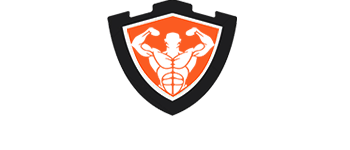Orals Vs. Injectables On The Liver
Orals Vs. Injectables
As humans, we’re always going to be interested in definitive and conclusive answers when it comes to comparisons. We want to know what’s the “best” and what’s the “worst” when it comes to pretty much anything.
If we were going to provide a straight and blunt answer to the query “which is worse: orals or injectables?” we’d probably have to say that orals could be classed as “worse” from a theoretical perspective, but because “worse” is so circumstantial, it’s genuinely impossible to say that this answer would be accurate at all.
Being that you already know the difference between the manners in which these items are processed, you know that the harshest oral varieties being placed against the harshest injectable varieties would without doubt see the orals prevail as the most toxic form of steroid administration.
However, if you were to take excessive amounts (far beyond your tolerance and experience level) of a moderate risk injectable variety compared to “normal” amounts of a low risk oral type, then of course the risk presented by the injectables would be much higher.
This debate extends into cycle protection too – if you use orals with excellent and effective protection in place, even if they’re medium to high risk varieties, then the chances are that you won’t encounter any issues. On balance, if you take a moderate risk injectable without any protection in place whatsoever (as many people do), then the risk presented to the liver would likely be higher than the oral cycle.
Orals Vs. Injectables
As humans, we’re always going to be interested in definitive and conclusive answers when it comes to comparisons. We want to know what’s the “best” and what’s the “worst” when it comes to pretty much anything.
If we were going to provide a straight and blunt answer to the query “which is worse: orals or injectables?” we’d probably have to say that orals could be classed as “worse” from a theoretical perspective, but because “worse” is so circumstantial, it’s genuinely impossible to say that this answer would be accurate at all.
Being that you already know the difference between the manners in which these items are processed, you know that the harshest oral varieties being placed against the harshest injectable varieties would without doubt see the orals prevail as the most toxic form of steroid administration.
However, if you were to take excessive amounts (far beyond your tolerance and experience level) of a moderate risk injectable variety compared to “normal” amounts of a low risk oral type, then of course the risk presented by the injectables would be much higher.
This debate extends into cycle protection too – if you use orals with excellent and effective protection in place, even if they’re medium to high risk varieties then the chances are that you won’t encounter any issues. On balance, if you take a moderate risk injectable without any protection in place whatsoever (as many people do) then the risk presented to the liver would likely be higher than the oral cycle.
FREQUENTLY ASKED QUESTIONS
When it comes to debates like this, you should never view them in terms of “overall”, you should instead view them in terms of the individual factors involved if you want to arrive at a clear and conclusive answer.
FREQUENTLY ASKED QUESTIONS
When it comes to debates like this, you should never view them in terms of “overall”, you should instead view them in terms of the individual factors involved if you want to arrive at a clear and conclusive answer.
What Are The Most Liver Toxic Oral And Injectable Varieties?
We can at least answer in terms of potency and say that the “worst” oral variety for potential liver toxicity is anadrol, and the “worst” injectable variety for potential liver toxicity is trenbolone.
This is dictated by their ratings and nature only.
Are Legal Steroids Safer For Liver Toxicity?
On the whole, it would be safe to say that a safely and effectively manufactured legal “steroid” variant would be less harmful to the liver than a pharmaceutical / prescription grade medication created in the same fashion (this is based on strength and the “processing” power needed by the liver to utilise it effectively.)
This all comes down to the individual factor “debate” again though – how safe a product is depends entirely on what it consists of. If you can individually see all of the listed ingredients on an item’s label (legal steroid), then you’ll likely find that they’re mostly plant / fruit and vegetable based.
However, if you see some ingredients listed alongside the words “proprietary blend” – then the safety of the product is questionable and will be unproven (you’d be amazed at how little a product gets screened in order to earn a safe for consumption rating, very little testing is needed.)
In moderation, most natural ingredient sources are completely safe for the liver; however, if taken in large quantities they could prove incredibly damaging.
When using an item containing a proprietary blend, you would need the assistance of third party testing to determine whether or not it were truly safe for consumption and presented a low risk to the liver.
It would theoretically be possible for said product to be more harmful than an oral steroid depending on the quantity of each ingredient it contained.
With the above stated, please take the C-17 alkylation process into consideration when determining potential toxicity too – C-17 steroids are always likely to be more harmful than any legal alternative due to them being “double filtered” through the liver.
In comparison to injectable varieties, most “legal” steroids will likely be far safer, though those containing a proprietary blend could either be safer, present an equal liver toxicity risk, or present a greater toxicity risk depending on their constitution.
What Makes A Steroid Liver Toxic?
The C-17 AA process is the reason why orals are particularly harsh, because they must be “digested” twice rather than just once. This places precisely double the amount of stress on the liver.

Should you incorporate adequate protection at all times during a cycle, then whatever risk a product presents is going to be reduced, even if it can’t be completely removed.
No Bridging Between Cycles - Why It’s Important To Take A Break
Those who believe that it provides certain benefits are often of the opinion that not having a gap in between cycles is somehow better for their hormonal output, being that they can theoretically keep their testosterone levels more “stable” than they can when dipping in and out of AAS utilisation.
The problem with this concept lies in the fact that all AAS types suppress organic hormonal output, even when combined with protective agents. Whilst you can certainly mitigate the level of suppression, you can never fully eradicate it.
Arguably, it may actually prove to be somewhat truthful that an individual can maintain “stable” hormone levels by bridging, but what they’re going to maintain is a constantly suppressed level, as opposed to a constantly optimum level.
As such, it makes no scientific sense to say that never having a gap is somehow “better” for your hormonal output – by having no break, you are at best making the most out of a situation that isn’t ideal, even if your levels don’t fluctuate much.
On balance, those who come “off” steroids for a period of time are able to fully restore their levels as opposed to having to keep them in a diminished state.
We must now also move onto the subject of the liver. As you’re well aware, the liver is going to inevitably take some “hammer” when using any form of anabolic steroid for any length of time.
By never having a break, even if you’re using adequate protection at all times, you’re never actually giving your liver the respite it needs to recover fully.
When you think about it, this only makes sense. No matter what anyone believes in regards to risk, or what they’ve personally experienced, you simply cannot escape the fact that if the liver is having to process exogenous compounds on a constant basis, its constitution is slowly going to get broken down over time.
No amount of protection in the world is capable of completely overriding this aspect of steroid use, especially if you’re taking them on a constant basis throughout the year.
Don’t think in the short term; it’s likely that you will indeed get away with using these products without facing any issues for a year or two, but you need to start thinking about what may happen in the long run.
For instance, many people overlook the fact that any damage caused in the short term isn’t just short-term damage; it can actually have a detrimental effect later down the line.
If part of your liver constitution is diminished at a young age, you will have the internal vitality needed to “carry” the damage, but as you get older, your OVERALL liver constitution is then taken into effect.
I.e. – when you’re at an age where the healthiest liver possible is necessary, you’re not going to have the same level of vitality / internal recovery as you did when you were younger; this could lead to negative health implications.
This is arguably why we’re seeing many of the “golden-era” bodybuilders suddenly start to develop issues as they age.
They didn’t necessarily face any issues at the time they caused their potential internal damage from AAS use, but when they reached an age where their liver or heart health needed to be as “intact” as possible, unfortunately it would appear that their bodies simply couldn’t meet their necessary health demands due to the overall “capacity” of these organs being diminished many years prior.
Whilst we can’t directly prove that any potential damage caused in these instances is the definitive cause of the issues some people face in later life, you should at the very least take this thought process into consideration. Perceived short-term damage isn’t always short term.
In a more basic sense, it’s probably fairly obvious that constant liver strain year round (no matter how well structured your cycles are or how mild the AAS types you use may be) simply isn’t ideal in any way.
For the sake of both your short and long term health, you shouldn’t place your body in a state where it is constantly “on”.
How Extended Cycles Of Oral Steroids Can Damage The Liver
Realistically speaking, you should only aim to use anabolic steroids for the minimum amount of time necessary to achieve your desired goal – this is true of both oral and injectable AAS varieties.
You’ve not only got your liver vitality to think about here, but the overall impact these items can have on several aspects of your health, including potentially your heart and your cardiovascular system too.
By prolonging your cycle, you’re applying pressure over the course of several months – the repercussions of which could prove to be serious in the long run even with the relevant protection in place.
It’s safe to say that oral varieties are of course going to present the biggest risk factor overall if used over a longer duration, but both administration methods can and will cause excess strain over time.
Even if you’re an experienced user of either AAS type, you should try to fine tune your training and nutrition to the extent that you can achieve the most maximal results possible before using steroids as a means of “finishing” your job.
This will always be safer than using them over an extended period of time.

